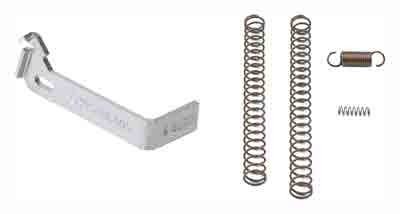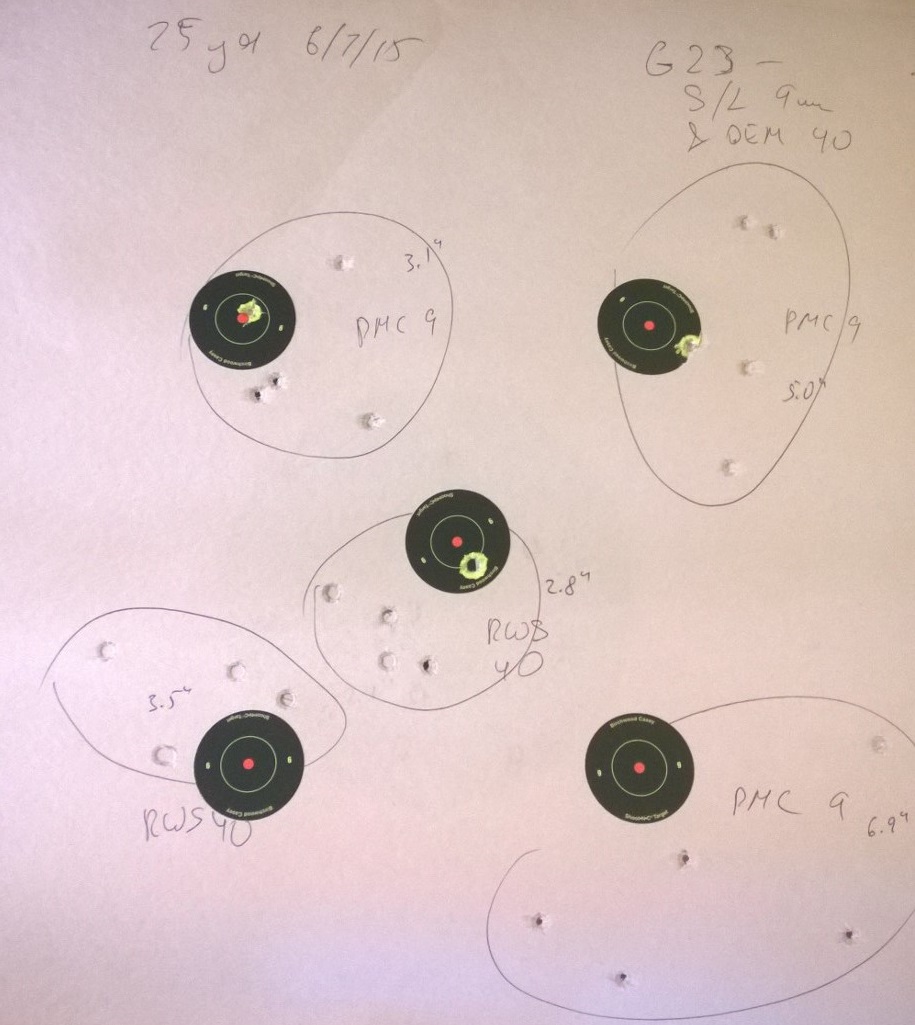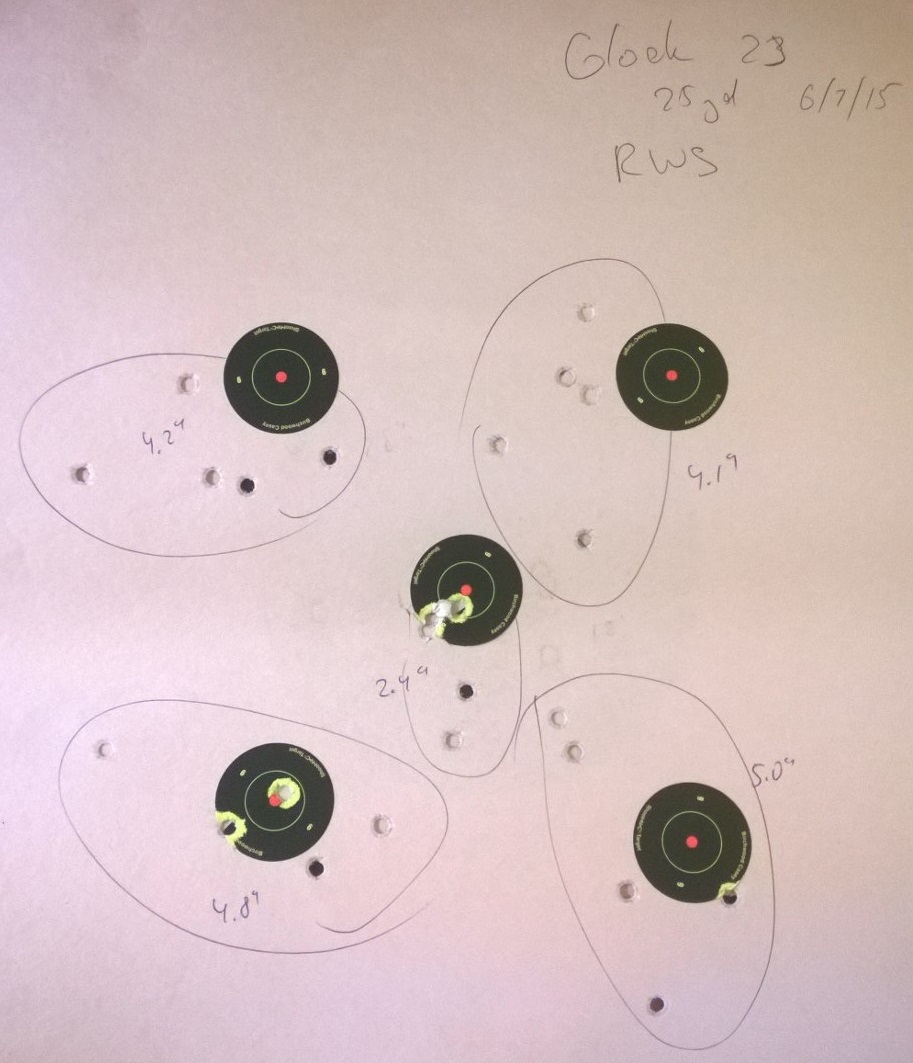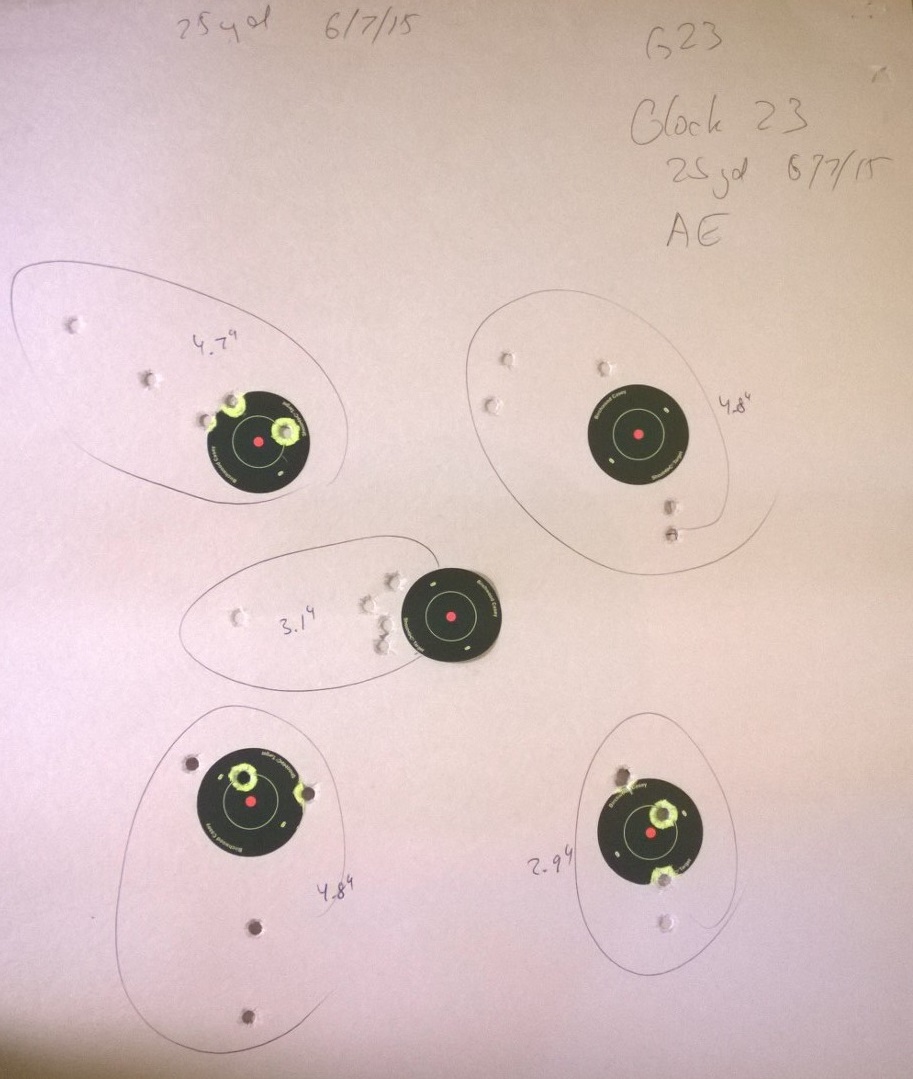Surplus Glock 23

I like 40S&W because with so many law enforcement agencies standardizing on this cartridge, you can always find a fantastic deal on 40S&W handgun on
surplus market. As a result, I have a very large collection of 40S&W pistols bought from various sources - all of them really cheap. My best purchase
was a Beretta 96 which I picked up at Century for $289 a couple of years ago. I think this is actually one of the best gun deals I found - ever.
Of all military surplus market, Glocks, though the most abundant, are my least favorite pistols. They are made for police use, and police likes to be
able to shoot right on drawing the gun - and they would like the behavior of the firearm to be consistent on each shot.
Before Glock, handguns came in 4 flavors - double action only, single action only, and double/single action. Double action only pistols first cocked
the hammer, then released it when you pulled the trigger, resulting in rather long and heavy trigger pulls. While your hand would quickly tired shooting
them, the police and military (who have strong hands AND don't usually put out hundreds of rounds in a day) appreciated the consistent trigger pull.
Single action pistols were the favorites of the competitive shooters, but had to be either safety-locked in a cocked position, or the slide had to
be racked before firing, cocking the hammer. This happens automatically in the course of normal shooting, as the recoil re-cocks the hammer, and
the first time the hammer is cocked when the first round is sent into the chamber. In case of a misfire, you had to rack the slide again - just
pressing the trigger does nothing. But they have amazing - crisp and light - triggers which would never tire your hand.
Double/Single action pistols were the combination of the above. They could be used in either mode - if the hammer is cocked, the pistol is shot in
a nice and crisp single action. If the hammer is not cocked, pulling the trigger results in long and heavy double action. The triggers in single
action mode were not as great as the ones on a single action pistols, but on some guns - for example, Smith & Wesson revolvers - they got pretty close.
Then came the Glock. I am not entirely sure if they invented the striker fired action, but it was definitely the Glock people who made it popular. In a
striker fired pistols, racking the slide compresses the striker spring halfway. The gun is safe, as the half-compressed spring is not enough to fire the
gun. The trigger, when pulled, first finished compressing the spring, then releases it and the pistol fires.
This results in a trigger pull that is considerably lighter than a typical double action pistol, yet behaves very similarly to double action.
While Glock advertises its trigger pulls of 5.5lb in most of their pistols, you do need to understand that it in no way compares to a 5.5lb
trigger on a single action pistol such as 1911. A good 1911 trigger breaks like glass: the distance the trigger travels is tiny. Glock, in the other
hand, has a very long trigger pull at these 5.5lb. The work is force times distance, so the energy expended by your hand on a 0.5mm travel of a 1911
trigger at 5.5lb is 10 times less than the energy expended on a 5mm travel of a Glock trigger.
This is the reason why I typically do not recommend Glocks for the first time shooters: the proficiency with a gun depends more on number of rounds
fired practicing with it more than on anything else. After 20 rounds fired though a Glock, my hand is pretty tired. After 40 rounds, it is shaking
and I have to leave the range. On the other hand I can shoot hundreds of rounds through my CZs, for example, which I shoot in a single action mode,
in a single visit to the range, and my hands are just fine.
As you read the further, keep in mind the following...
- I am a target shooter, I almost never carry a pistol
- ...when I do, I never carry it with a round in a chamber...
- Be aware of the Glock leg syndrome
which can undoubtedly be made more likely if the trigger pull is made lighter.
- If you convert your pistol to a lighter trigger, you should not carry it loaded. If you decide to do so, you should convert it back to
the factory setting.
One of my distributor carries a wide variety of surplus Glocks. Though Glock 22s are very common in the surplus market, as they are the staple of
law enforcement agencies across the country, my distributor also has a great supply of G23s, G21s, and even an occasional G17 and G27, though the
latter ones are pretty rare. They are cheap, too, and I am a sucker for a good deal, so I accumulated a bunch of them in my personal collection.
But because of the trigger, I never shoot them.
Recently, however, I picked two things that reignited my interest in Glocks. First was a 9mm Storm Lake barrel, which converts a Glock 23 to the 9mm
caliber. Since I liked the idea of 2 calibers in one pistol, I fished out a G23 that I left for myself, and tried the barrel on.

But I still knew that I could never enjoy shooting it because of the trigger. The solution to that was here, right in the store -
Ghost Inc's Edge 3.5lb Trigger Kit.

Installing it was a breeze. The kit replaces almost all the springs in the pistol - and the transfer bar. The results surpassed all my expectations:

Consistent 3lb trigger pull! Though still long, it was now not at all a bother - it felt more like a two stage trigger now, and I love two stage
triggers.
So I took it to the range, and shot a bunch of boxes of 9mm through the Storm Lake barrel, and a few boxes of 40S&W through its native barrel.
Here are the results (5 short groups, 25 yards).
Storm Lake barrel

The results were... uninspiring. Reliability was OK for target use - once in a while the round would fail to eject. Remember, the recoil
spring is still a 40 - I am pretty sure that I could load a sufficiently hot round for it to not be a problem. Target factory rounds are
pretty mild.
The accuracy was a bigger problem. The ammunition I tried produced rather wide groups - mostly over 5". This IS a problem for a target pistol.
Storm Lake barrel, native barrel (RWS)

After being uninspired by the 9mm barrel accuracy, I switched to 40. The results were instantly better...
Native barrel


...but they weren't super consistent, eiher - though the stayed under 5", about half of the groups were around 3", but another half was between
4" and 5".
In the next couple of weeks I will try to play with handloads and see how accurate I can get this pistol to be. As of right now, it qualifies
as a combination of a plinker and a trail gun, though at 25 yards soda can targets may occasionally elude you.
Stay tuned!